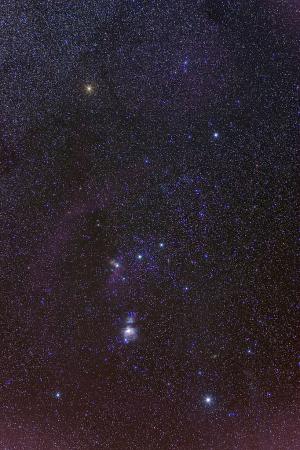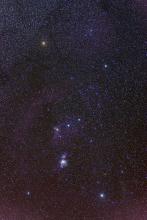Land of the Supergiants [1]
A land of supergiants soars across the south on winter nights. Orion is one of the more prominent constellations. That’s because the seven stars that outline the hunter's body are all current or future supergiants — the biggest, brightest, and heaviest of all stars.
Three of them form Orion’s Belt — a short line that extends straight up from the eastern horizon at nightfall. Orange Betelgeuse is to the left of the belt, with Bellatrix to the upper left. Blue-white Rigel, the brightest of the seven, is to the right of the belt, with Saiph to the lower right.
All seven stars formed from the same complex of gas and dust — clouds that span hundreds of light-years. They’re near the inner edge of the Orion Arm — one of the Milky Way Galaxy’s spiral arms. A wave is passing through the arm, squeezing the clouds. That causes them to collapse and give birth to new stars.
The brightest of Orion’s supergiants is Alnilam, which is at the bottom of the belt. It’s about 40 times as massive as the Sun, and half a million times brighter. It looks fainter than Betelgeuse and Rigel because it’s farther away. And Betelgeuse is the biggest of the seven — about 900 times the Sun’s diameter.
All seven of the stars likely face the same fate: Each will explode as a supernova. And it won’t take long. Massive stars age quickly, so Orion’s supergiants are likely to explode within a few million years — turning the land of the supergiants into a graveyard.
Script by Damond Benningfield
Keywords:
- Orion's Belt [3]
- Orion, the Hunter [4]
- Supergiant Stars [5]
- Supernova [6]


